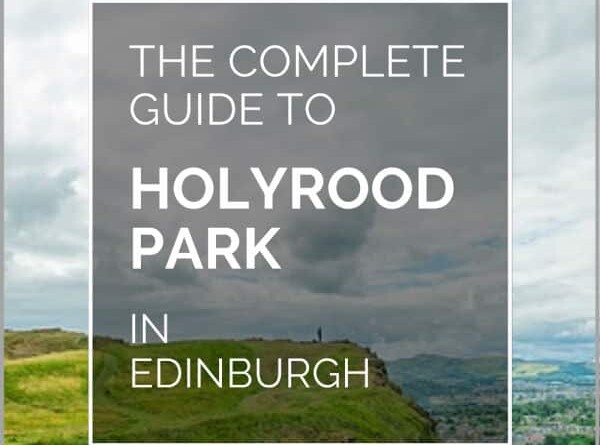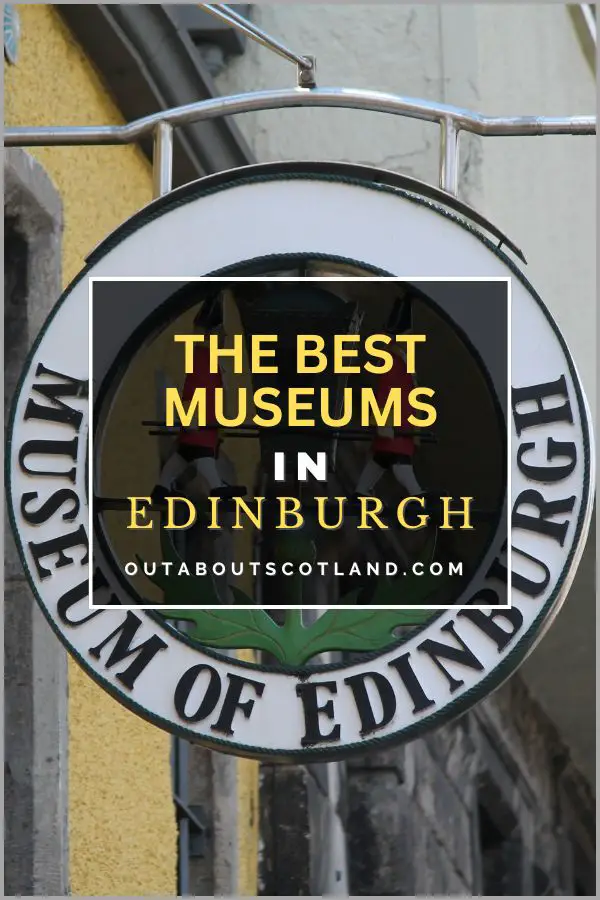Holyrood Park is a testament to Edinburgh’s remarkable ability to blend the urban and natural worlds seamlessly. It boasts unrivalled views of the city, dramatic cliffs, a tranquil loch, and a diverse array of flora and fauna. But, perhaps its most distinctive feature is Arthur’s Seat, an ancient volcano that forms the park’s highest peak, offering a panoramic view of the city that’s simply unparalleled.
This article will transport you to the expanses of Holyrood Park, exploring its captivating history, stunning landscapes, and the unique experiences it offers to residents and visitors alike.
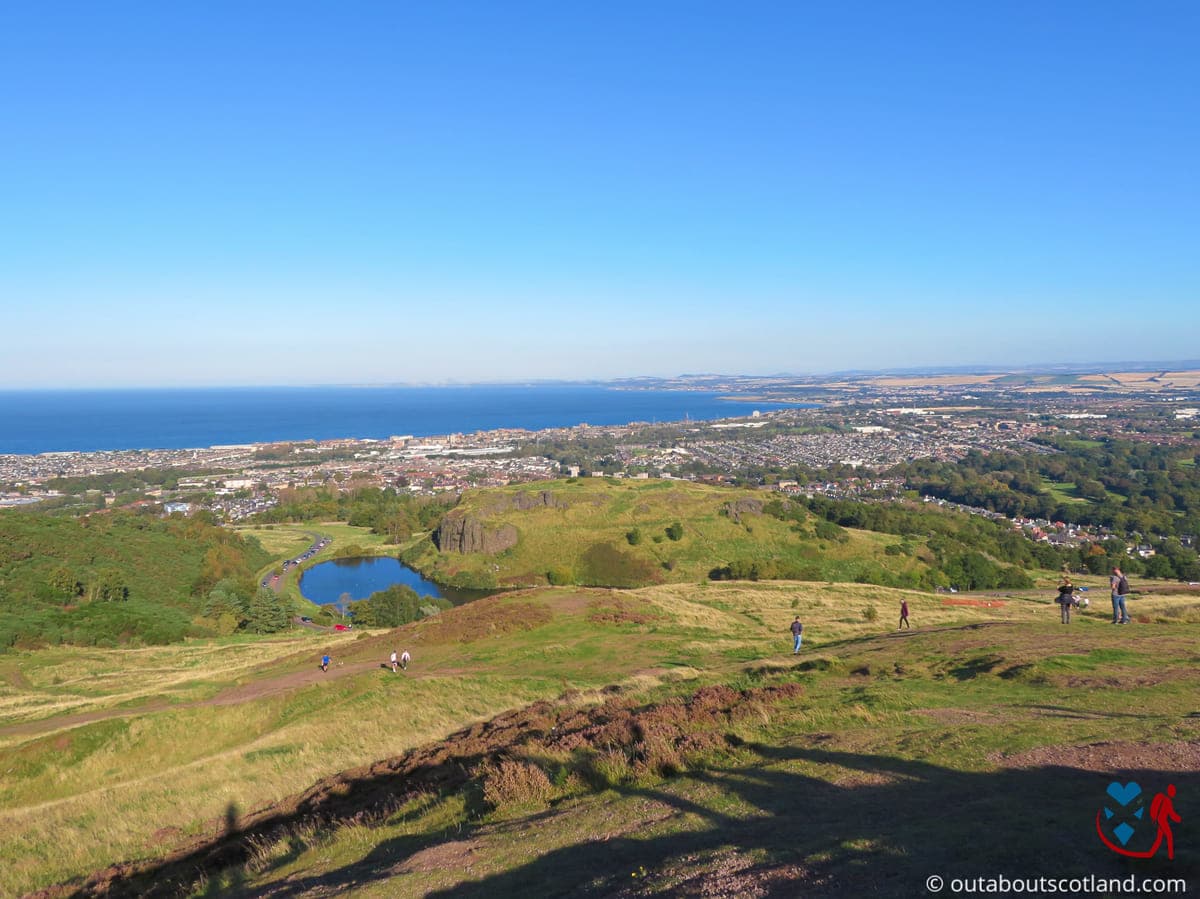
| Address: | Queen's Drive, Edinburgh, EH8 8HG |
| Opening Hours: | Holyrood Park is accessible on foot 24/7, 365 days a year. The park is closed to cars at the weekend. |
| Admission Price: | There is no fee to visit Holyrood Park. |
| Parking: | Parking is available at Broad Pavement, St Margaret's Loch, and Duddingston Loch car parks. Broad Pavement parking is paid (approx £1 per hour) except for Historic Environment Scotland members. The other car parks are free. |
| Contact: | NA |
| Facilities: | There are no facilities within Holyrood Park. There are a multitude of visitor facilities available on the Royal Mile including shops and restaurants. Toilets are available at the Holyrood Park education centre (1 Queen's Drive, Edinburgh, EH8 8HG). |
| Photos: | Virtual Tour YouTube Video |
Overview
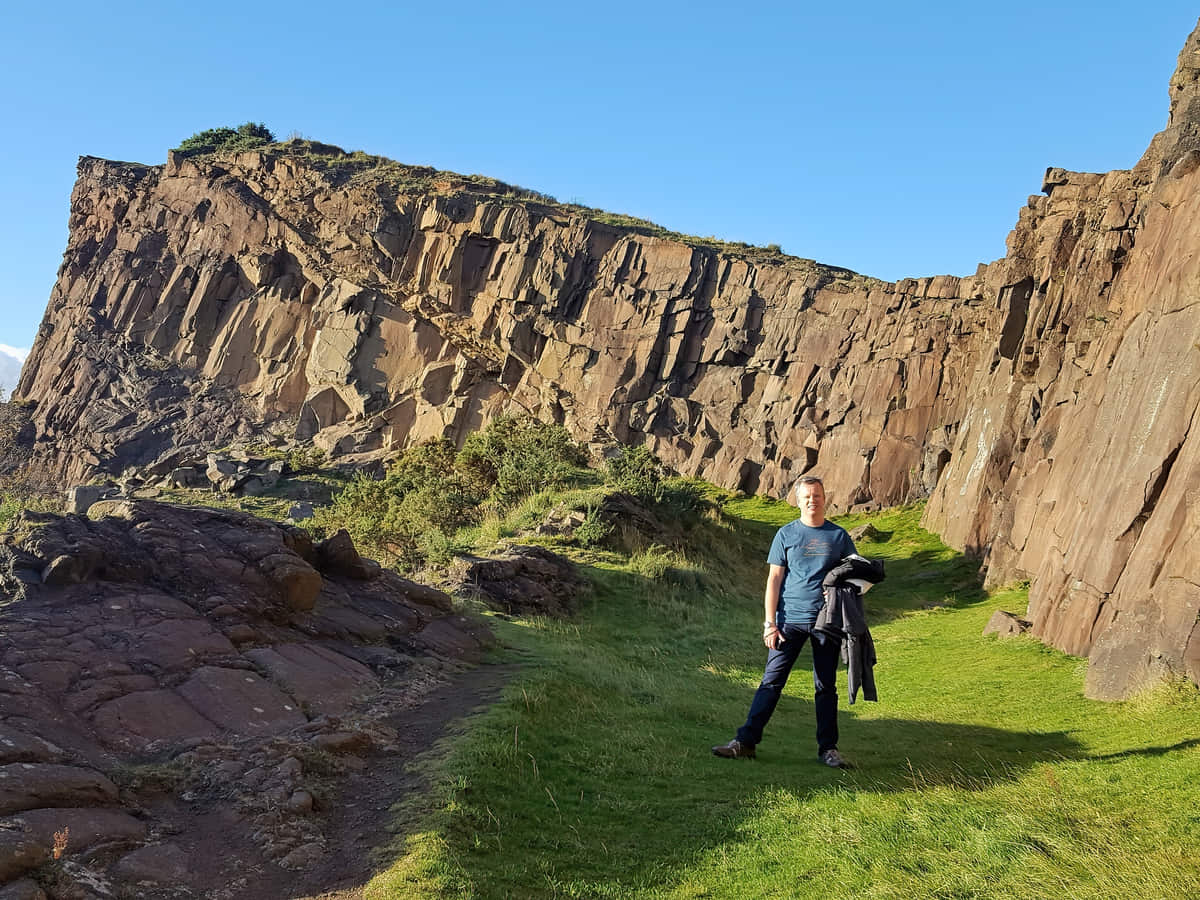
Holyrood Park, located in the heart of Edinburgh, is a historic and beautiful landscape centred around an extinct volcanic plug. The park, spanning 650 acres, is home to Arthur’s Seat which offers panoramic city views. Rich in wildlife and archaeology, it also features the 15th-century St. Anthony’s Chapel ruins.
Walk a mile to the east of Edinburgh Castle and you’ll find Holyrood Park – an outstanding area of natural beauty that offers visitors a haven of tranquillity amongst the hubbub of Scotland’s capital city. This is a surprisingly big urban green space and even though it’s situated in the middle of the city it offers more than 650 acres of wilderness to explore.
Take a stroll through Holyrood Park you’ll quickly discover that it’s just like a miniature version of the Scottish Highlands, with wild meadows, peaceful lochs, mountainous peaks and swathes of gorse, and on a quiet day it’s easy to forget you’re in the middle of the country’s capital city.
The most accessible route into the park is to head down The Royal Mile towards the Scottish Parliament building, and from there you can either walk around the perimeter to enjoy the scenic landscape along the ring road or you can follow the paths that wind their way through the middle of the park. While both options are enjoyable I recommend you head towards the centre to experience the dramatic views at the top of Arthur’s Seat if you really want to make the most of your visit.
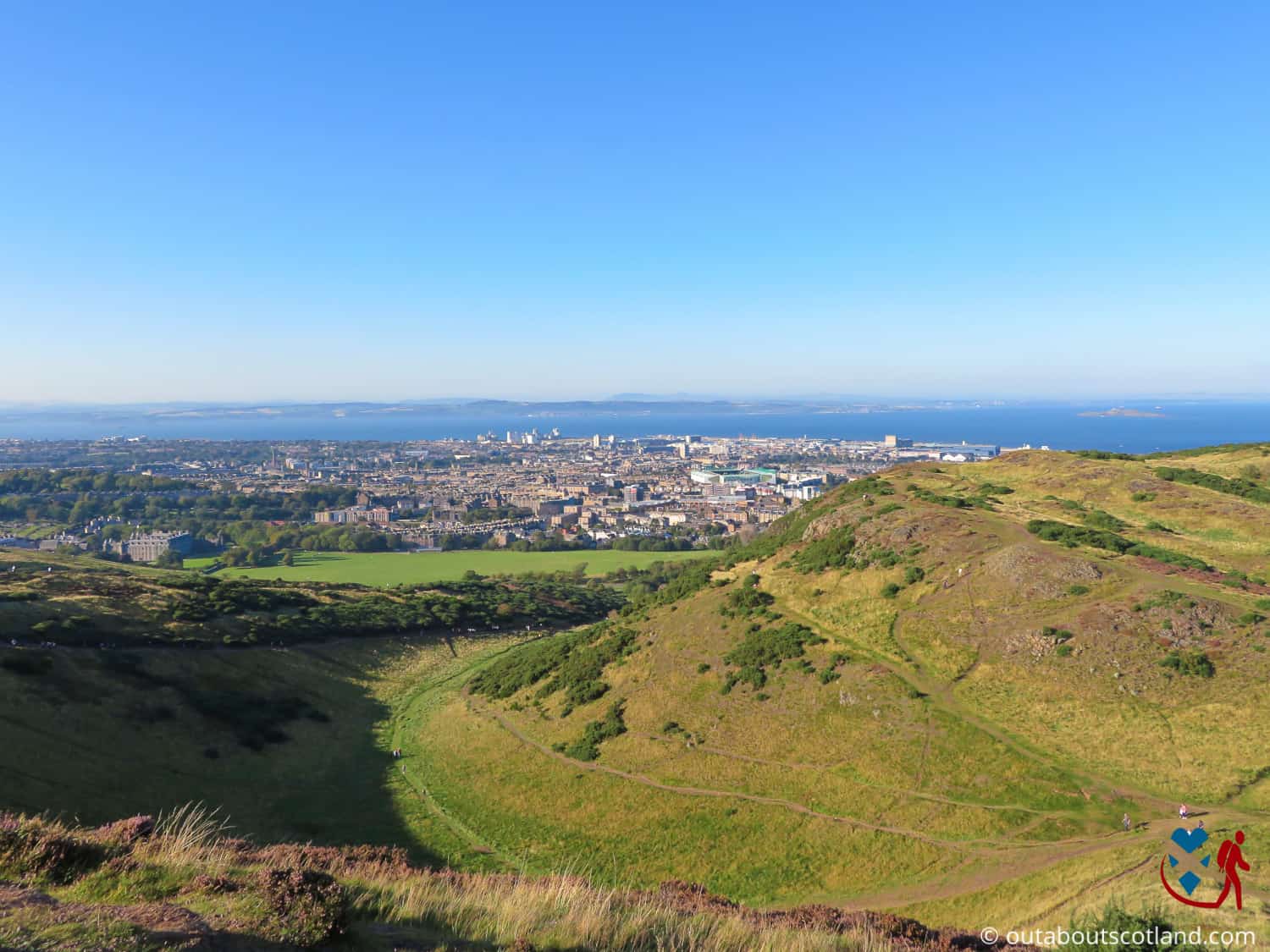
The Highlights
1: Holyrood Park is a haven of tranquillity in the middle of Edinburgh. Apart from Arthur’s Seat at the weekend. Once you get up there you’ll have to fight your way through crowds of tourists, especially on sunny days. The views are superb though.
2: The park is massive so there are lots of different paths to wander around. I recommend heading to Dunsapie Loch on the eastern side of the park as it’s quieter than the western side around Queen’s Drive.
3: Holyrood Park is home to several important historical landmarks, including St Anthony’s Chapel which is a medieval ruin, and Duddingston Loch which is a natural freshwater loch that’s full of wildlife.
Visiting Tips
1: I’d give Arthur’s Seat a miss immediately after a rainfall as the path gets very slippery and several spots are tricky to clamber up. Although a hand rope has been installed on some of the steepest sections, it often frays and breaks away meaning it’s easy to slip on the rocks that lead to the summit.
2: You can’t drive through the park at the weekend as the council closes the entrance gates. I suggest walking into the park instead as it’s so close to the Royal Mile. Holyrood Palace to the park is literally a 2-minute walk.
3: If you visit midweek you’ll find a couple of car parks around the bottom of Holyrood Park, but you can actually park inside it at Dunsapie Loch if you want easier access. This car park has space for around 30 cars.
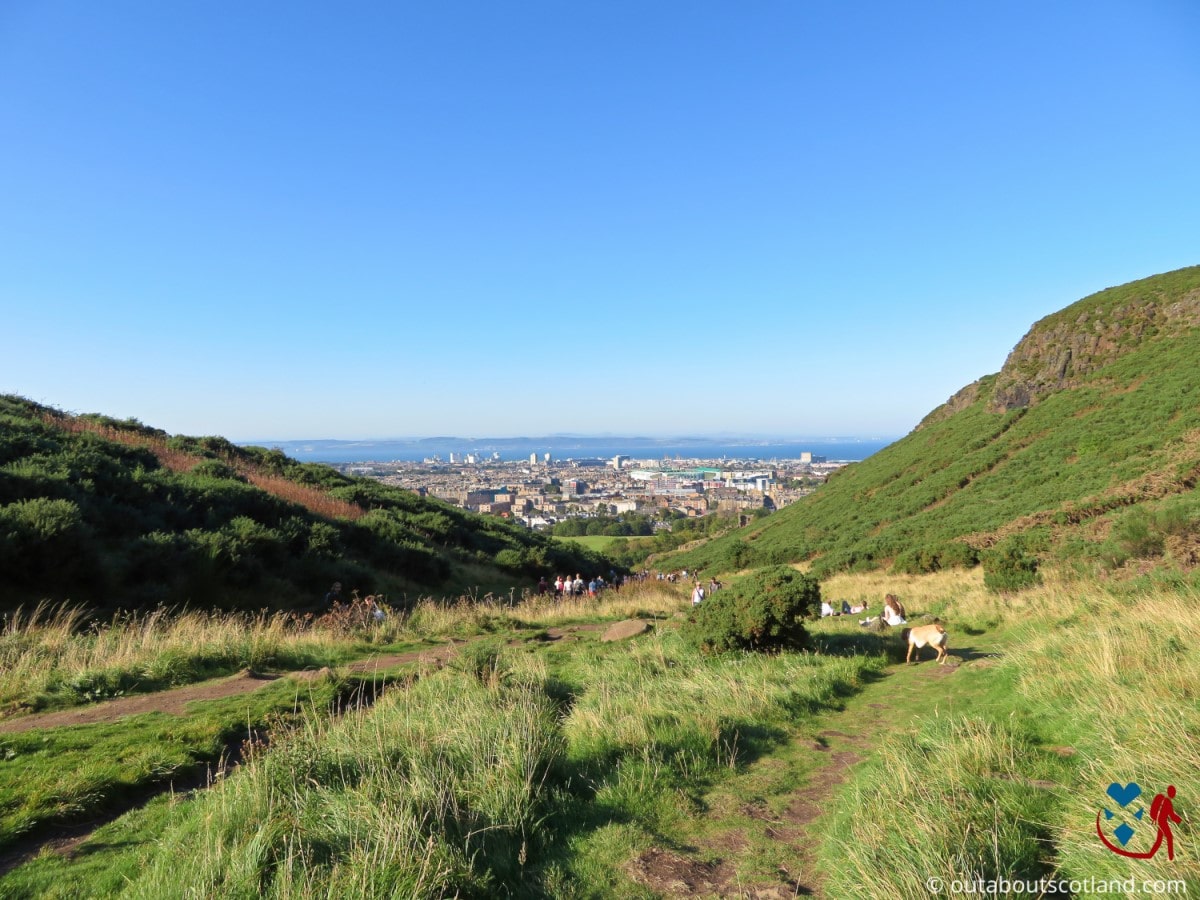
Tourist Information
If you’re feeling adventurous you can climb up the 800-foot incline to Arthur’s Seat – the highest point in Edinburgh – to take in the views in a stunning 360° panorama. Take note though, that although the path to the top is well used it’s also a hard climb, so anyone with mobility issues might want to consider giving it a miss.
The best route to take is to head east past Dunsapie Loch and follow the obvious, well-worn path that leads towards Arthur’s Seat. Alternatively, you can head off in any random direction as there are lots of interesting features to discover such as the three lochs that are a haven for wildlife and the ruins of St. Anthony’s Chapel which is one of the oldest buildings in the city.
The chapel is a relatively small structure around 13 metres long by 5.5 metres wide, with one-metre-thick walls built from locally sourced stone. Historians think the origins of the chapel date somewhere in the 14th or 15th centuries, although the exact date is unknown. There are, however, records that show a grant for repairs was given by the Pope as far back as 1426.
The fact that the Pope authorised this grant seems to suggest that St. Anthony’s Chapel had some significance back then, and possibly had a connection to the nearby Holyrood Abbey. Unfortunately, the chapel fell into disrepair after the Scottish Reformation in 1560 and today only the north wall remains alongside the remnants of a storeroom just a few yards away to the south-west.
If you do happen to find the ruins of St. Anthony’s Chapel you might like to head north around a hundred metres to St. Margaret’s Loch which is a man-made body of water created in 1856 under the instruction of Prince Albert as part of his improvement plans to beautify the land surrounding Holyrood Palace.
It’s a great place to feed the ducks, geese, and swans that live there and the path that runs alongside it is a very popular route for joggers. If you’re a day visitor to the city, my suggestion is to follow the path from Queen’s Drive near Holyrood Palace into the park and then climb up Arthur’s Seat before returning to Queen’s Drive via Salisbury Crags.
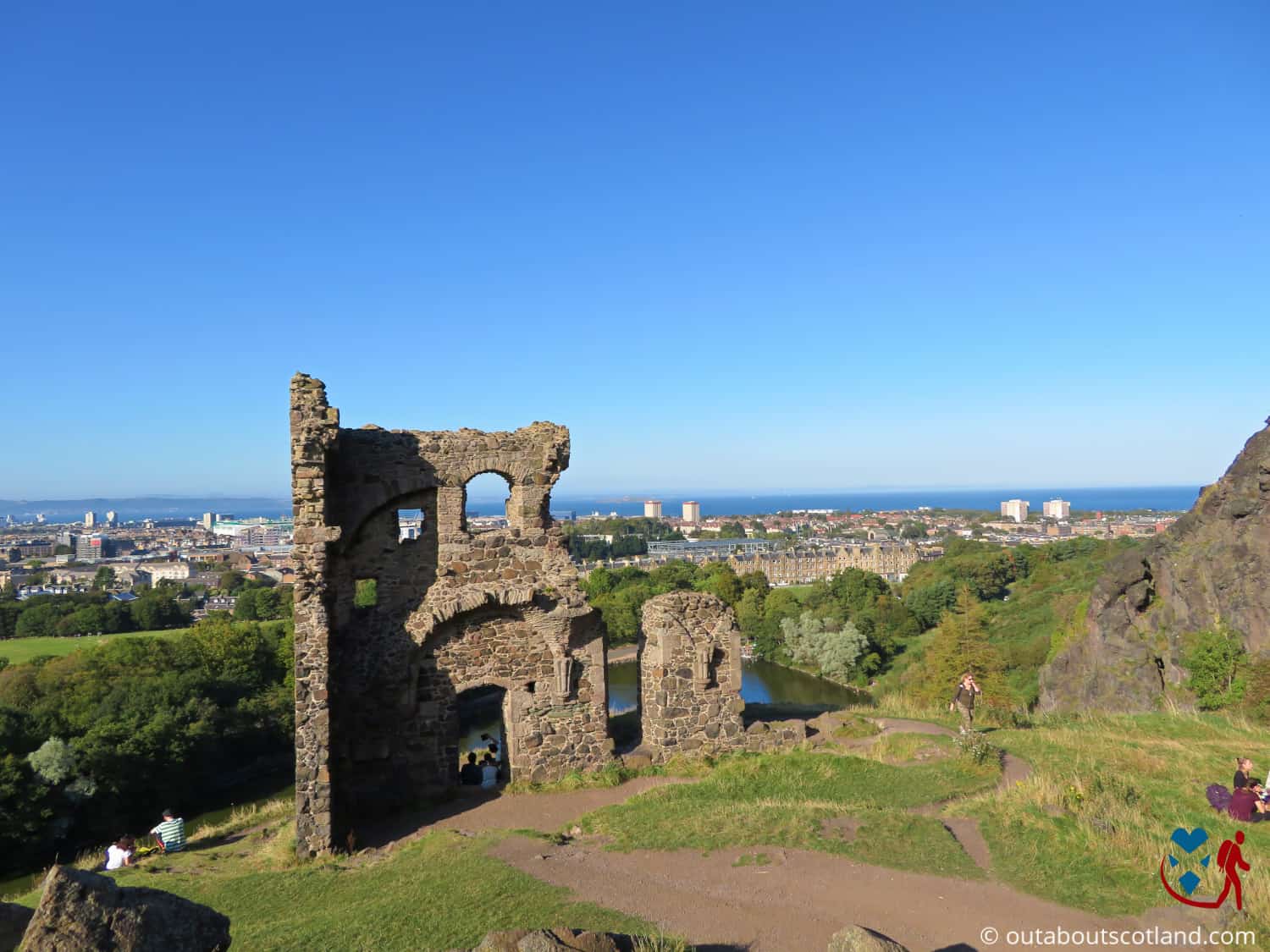
History
Like the rock on which Edinburgh Castle was built, Arthur’s Seat was formed by a volcano that erupted around 340 million years ago, and over many millions of years the effects of weather erosion and glacier movements formed the rocky outcrops that we see today.
The study of the rocks in Holyrood Park has been instrumental in the development of modern earth science, and renowned geologist James Hutton formed many of his ideas about how the planet was created after studying the park’s lava formations. The site where Hutton conducted his research can still be seen as you wander around the path that runs along Salisbury Crags.
Google Maps will be your best friend if you want to find Salisbury Crags, but it’s basically a cliff face on the west side of the park – the bottom of which is where you’ll find the path built after the Radical War of 1820. The ‘war’ was actually a week of strikes and unrest caused by Scottish manual labourers who were protesting against the terrible conditions in which they had to work.
After King George IV visited the city in 1822, the author Sir Walter Scott had a radical idea that unemployed weavers from the west of Scotland could be used to build a footpath around the park – hence its name, The Radical Road.
Heading further up towards the peak of Arthur’s Seat you can just about make out the remains of hill fort defences that were built at the time of the Votadini tribe, around 600 AD. These Iron Age hill forts are some of the earliest known man-made structures in the city and they’re a popular destination for visiting history and archaeology students from all over the world.
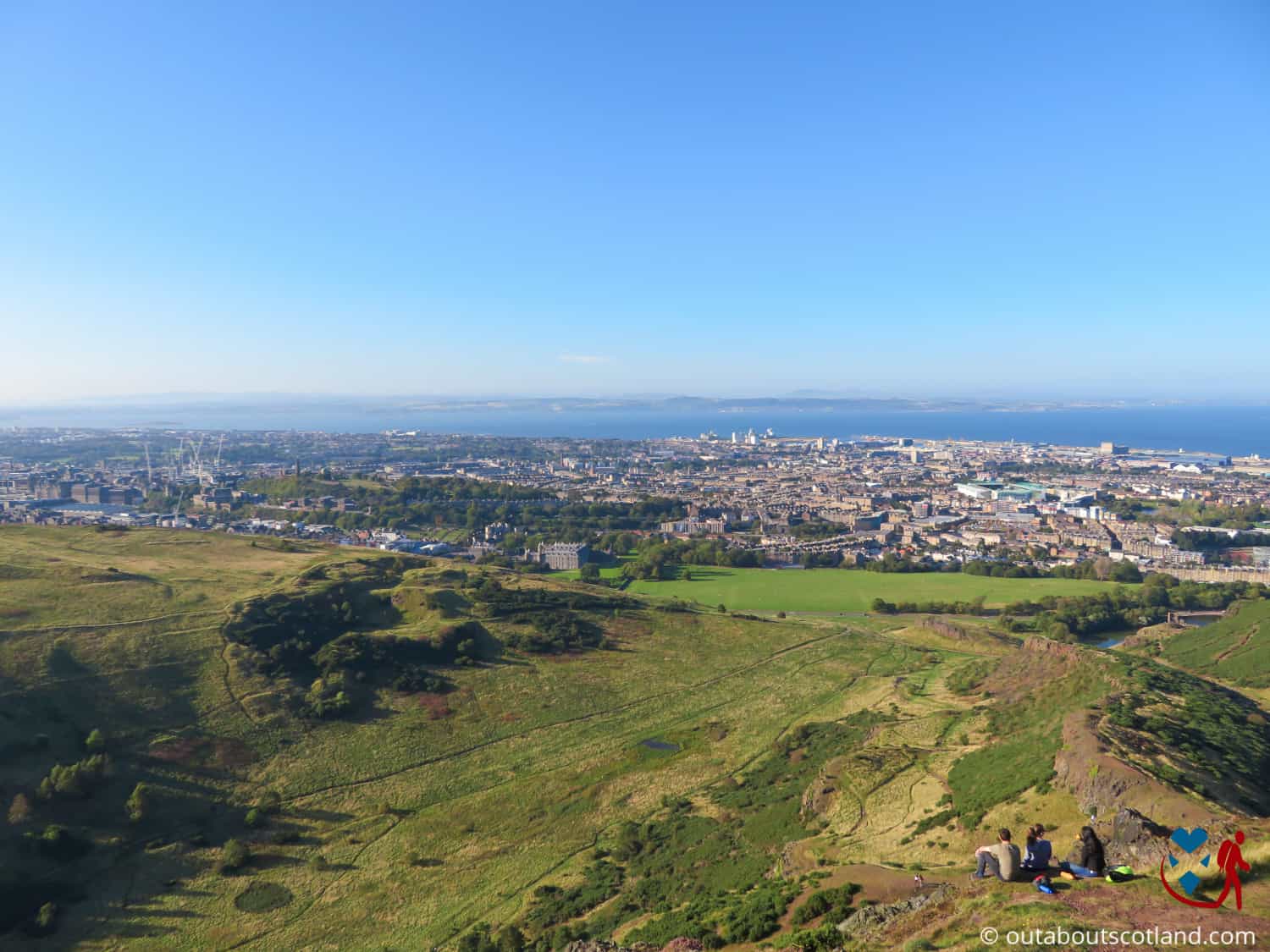
Walking Route
Holyrood Park can be walked around in any direction and the paths are well laid out, although they’re not clearly signposted. A good starting point is to head onto Queen’s Drive south of Holyrood Palace and turn onto the path near St Margaret’s Well (which has an information sign next to it).
Turning right, there’s a fairly steep incline up a rocky path that runs around Salisbury Crags, and this section of the walk will take you past the area where the world’s first geological studies were carried out. Eventually, you’ll come to a section that heads back towards the road, but if you turn in the opposite direction and head further into the park you’ll begin your ascent to Arthur’s Seat.
There are various routes to get to the top, but the most popular is easily seen from the well-worn tracks and rope handrails that have been installed by park wardens.
As you walk back down to the main pathway after climbing the summit you’ll follow the tracks that lead into the very heart of Holyrood Park, where steep slopes surround you on either side. While you’re heading back towards the direction of Queens Drive be sure to stop and take a look at St. Anthony’s Chapel.
Following this, you’ll be able to follow the paths that lead back to your initial starting point opposite Holyrood Palace, for a complete walk that will take around 2 hours.
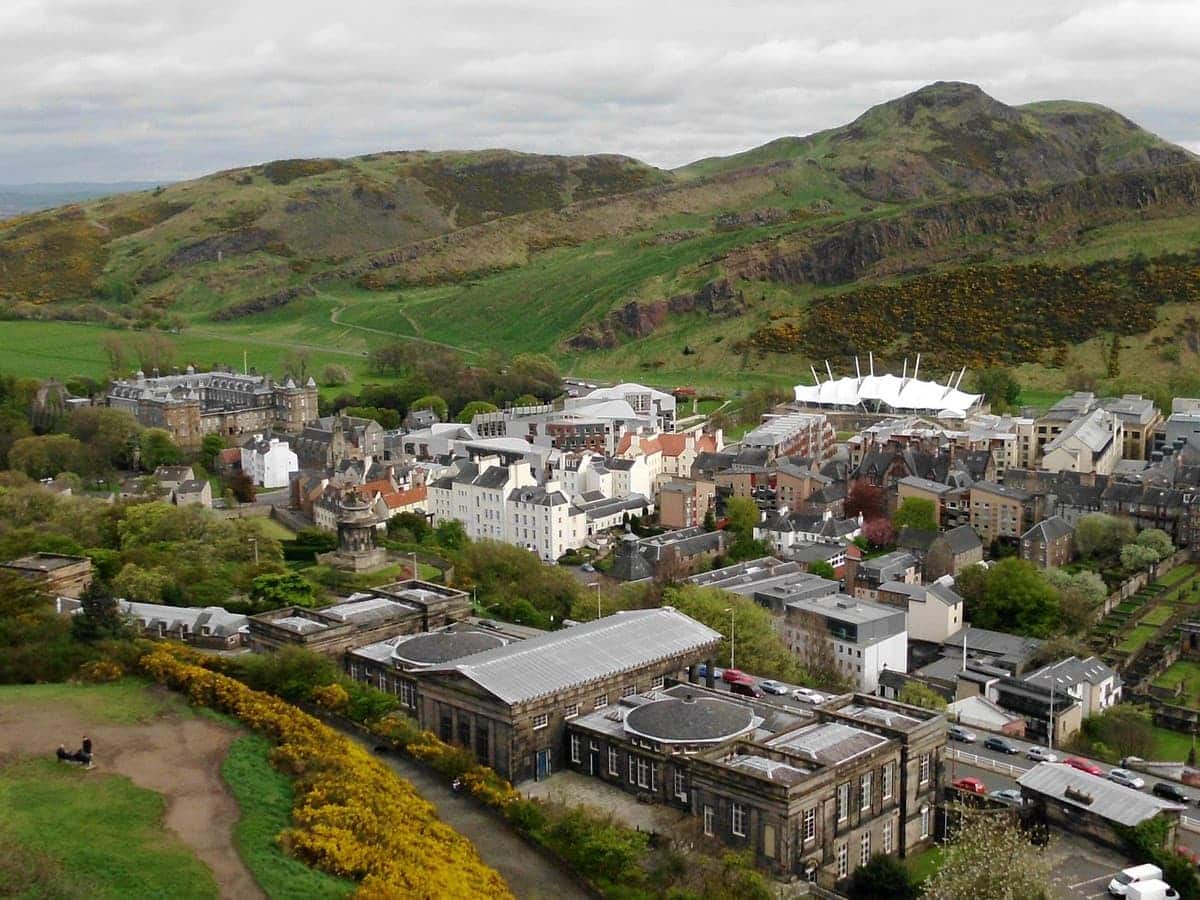
Things to Do
Climbing Arthur’s Seat: Arthur’s Seat, the remnant of an ancient volcano, is the main peak in Edinburgh’s Holyrood Park. It offers a straightforward climb which is achievable by most levels of fitness and rewards with panoramic views of the city at the summit.
Visiting St Anthony’s Chapel Ruins: This medieval ruin perched on a hillside is one of the oldest buildings in the city. Although little is known about the chapel’s origins, the ruins that we see today are believed to date back to the 15th century. You’ll find it overlooking St. Margarets Loch on the northeast corner of the park where it’s accessible from Queen’s Drive.
See the Exhibition: The Holyrood Lodge Information Centre hosts a range of exhibitions and activities related to the park’s natural and historical heritage. It’s an excellent starting point for understanding the park’s geology, flora and fauna, and its historical significance. The address is 1 Queen’s Drive, EH8 8HG.
Walking the Salisbury Crags: These dramatic cliffs form a natural boundary to the park and are a prominent feature of Edinburgh’s skyline. A designated path – the Radical Road – allows visitors to explore these cliffs safely, offering stunning views over the city from start to finish. To find the start of the path, head to Holyrood Palace and walk straight to the park. The path starts opposite the palace car park.
Enjoy a Picnic: Grab a take-out from anywhere on the Royal Mile and walk to Holyrood Park to enjoy an al-fresco meal with a view to remember. Numerous spots are ideal for unpacking a picnic but my recommendations are St. Margaret’s Loch and Dunsapie Loch which both have car parks nearby.
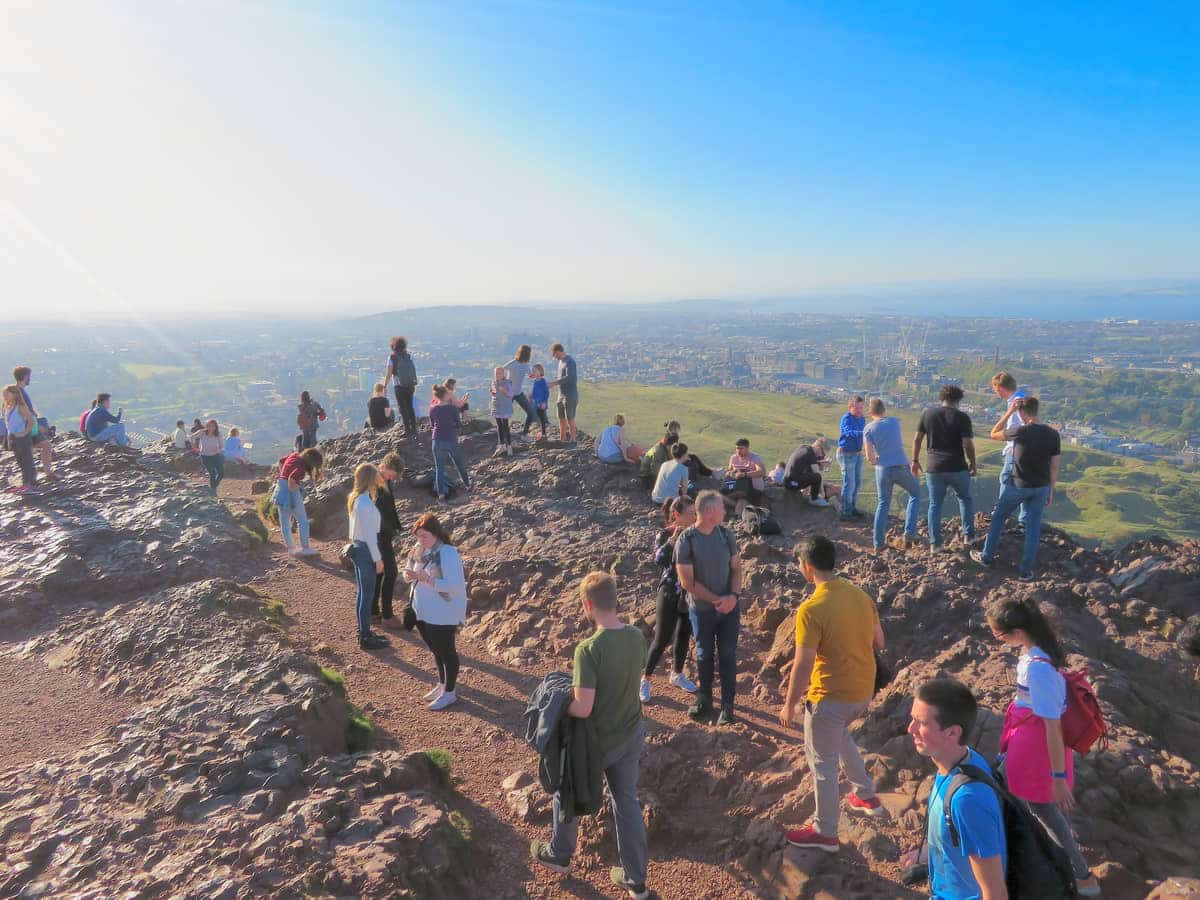
Things to Do Nearby
From St. Margaret’s Well on Queen’s Drive:
Holyrood Palace. Palace of Holyroodhouse, Canongate The Royal Mile, Edinburgh EH8 8DX. A 6-minute walk from St. Giles Cathedral.
Holyrood Palace is HM The Queen’s official residence in Scotland. The palace is open to visitors who can explore the royal rooms on a self-guided tour. Tickets include a visit to The Queen’s Gallery and Holyrood Abbey.
Scottish Parliament Building. Edinburgh EH99 1SP. 8-minute walk.
The official location for the Scottish government. The ultra-modern building is open to the public for guided tours and the viewing area allows the public to watch live debates in progress.
Calton Hill. Edinburgh EH7 5AA. 23-minute walk.
One of the most popular free attractions in Edinburgh. Calton Hill offers superb views across the city and is home to the recently renovated observatory and restaurant. There are several monuments on Calton Hill that include Nelson’s Monument – a towering monument to Admiral Nelson that can be climbed – and the National Monument of Scotland.
Dynamic Earth. Holyrood Rd, Edinburgh EH8 8AS. 7-minute walk.
A family-oriented science-themed attraction that aims to educate and entertain visitors with a collection of displays and exhibits. There is a café on-site, a 360-degree cinema, a café and more.
Dr Neil’s Garden. 15 Old Church Ln, Duddingston, Edinburgh EH15 3PX. 40-minute walk.
A historic private garden that is open to the public. The garden is located next to Duddingston Loch in Holyrood Park where visitors can walk through conifers, heathers and alpine plants.
Frequently Asked Questions
Can you drive to the top of Arthur’s Seat?
It is not possible to drive to the top of Arthur’s Seat. However, there is a road (Queen’s Drive) that winds its way up to a car park at Dunsapie Loch which has an elevation of 360 feet (110 metres), with the remainder of the route only possible on foot. Arthur’s Seat has an elevation of 823 feet (251 metres).
Can you walk through Holyrood Park?
It is possible to walk through Holyrood Park on a number of rough gravel footpaths. The paths are wide and level heading into the park from Queen’s Drive, but they are not well signposted.
How long is the walk around Holyrood Park?
The paths through Holyrood Park spur off in a number of directions, but there is a circular route around the perimeter that deviates up Arthur’s Seat for a walk that takes approximately 2-3 hours.
Alternatively, from Queen’s Drive visitors can take the paths around Salisbury Crags which takes around 1-2 hours.
How big is Holyrood Park in Edinburgh?
Holyrood Park covers 650 acres (263 hectares).

